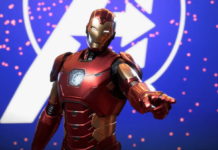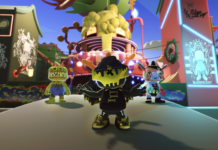Admittedly, I never really knew a thing about Company of Heroes before I saw the second installment. On my way to check it out, I kept thinking, How am I going to write another preview about a shoot ‘em in the face game? Well, I was wrong. It turns out that Company of Heroes 2 isn’t a military FPS; it’s a military RTS. Going in blind was well worth the surprise, because Company of Heroes 2 seems to have some great potential.
Where most real-time strategy games are about resource management and technological upgrades, Company of Heroes is a much more direct affair. Managing troops with strategic planning and carefully constructed pathing is extremely necessary. While there are resources like manpower, fuel and munitions to consider, the game nearly hands the player all the tools it will need to be an effective commander on the field.

This time around, the soldiers struggle with real battlefield issues, including mobility, visibility and even weather. As overlords of the map, us RTS players are used to knowing everything from a bird’s eye view, and our units behave accordingly. But in Company of Heroes 2, large buildings, slopes and debris complicate the line of sight. This is one of the many ways that the game is capable of taking a strategy game and making the player think like a soldier.
Weather is the next big bit – most specifically the harsh winter. Infantry is greatly affected by the cold, and they can even freeze and die. Having support units build fires is key to survival. The player can even send units into abandoned buildings, and in the case of event-like blizzards, units will have to be sheltered from the storm . On winter maps, players must advance swiftly and with great concern for their soldiers. This dynamic creates a sort of game akin to a deadlier chess.

The deep snow of the winter and debris of the war torn spring maps make mobility another concern as well. The game has a fairly hands on AI for pathing, but it’s also up to the player to help out a bit. During my preview, it seemed a bit off, but the team said the AI was a work in progress. Still, the soldiers generally pressed on in an intuitive way, and the tanks usually just rolled through anything posing an obstacle.
Company of Heroes 2 manages to create a war-appropriate atmosphere. The banter of the Germans and Russians is highly amusing. While a sense of manly bravado is echoed by the cast, it doesn’t seem to take itself too seriously. The Germans are portrayed as scholars merely serving their duty, where the Russians shout war cries to their “noble” Stalin. But in the wake of war, it’s what brings us together that’s most important, and apparently that’s everyone’s disdain for the freezing weather.

The Essene 3.0 engine, the developer’s proprietary tech, adds quite a bit detail and paints the battlefield well. The game can look murky and lack the crisp detail of games like Starcraft, but it seems to be the way of things in a much grittier, real world game. When zooming on units, facial features are distinct, tanks are accurate and the field is diverse. It’s obvious that Relic, the game’s developer, paid great attention to detail to recreate the experience of war.
RTS games are difficult to do well. Much like the RPG crowd and fighting fans, the audience is fickle. Being not so great at those games myself, it’s hard for me to say whether or not I expect this game to turn out. But, I did enjoy myself, and I really love the idea of a military game that isn’t so much about twitch mechanics as it is battle strategy. The success of this title will also be something to keep an eye on, as THQ could really use the win. I know that at the very least, I’ll be having my eye on Company of Heroes 2.










